This article was co-authored by wikiHow staff writer, Ali Garbacz. Our trained team of editors and researchers validate articles for accuracy and comprehensiveness.
wikiHow’s Content Management Team carefully monitors the work from our editorial staff to ensure that each article meets our high quality standards.
There are 10 references cited in this article, which can be found at the bottom of the page.
wikiHow marks an article as reader-approved once it receives enough positive feedback. This article has 31 testimonials from our readers, earning it our reader-approved status.
This article has been viewed 1,899,718 times.
Learn more...
If you’re in need of a very precise length measurement, a Vernier caliper is going to be your best friend. This tool is used to measure internal and external dimensions, and it will give you much more specific measurements than a regular ruler. Learning to read a Vernier caliper is easy, and after a bit of practice, you’ll be using it like a pro. Keep reading to learn how to measure using this nifty tool and how to read the numbers you’re seeing.
Things You Should Know
- Calibrate your caliper before using it by closing the jaws and lining up the 0 marks on the two scales, then place your object between the jaws.
- Tighten the jaws by sliding the moving scale until the jaws are flush against your object.
- Record the values being shown on the main scale and moving scale separately, then add them together to get your final measurement.
Steps
Preparing Your Vernier Caliper
-
1Locate both sets of jaws and measuring scales on your caliper. A Vernier caliper has large jaws that are used for measuring an object’s external diameter, as well as smaller jaws that are used for measuring the internal diameter. There are also two scales. The Vernier scale is the sliding scale that opens and closes the jaws, while the main scale remains fixed in place.[1]
- Some models also have a depth gauge at the very end of the main scale.
-
2Read the scales on your Vernier caliper like you would read a ruler. A caliper usually has a main scale marked with numbered inches or centimeters, plus smaller divisions between them. The sliding (Vernier) scale often has an engraved label that tells you what units are being used.[2]
- If the sliding scale doesn't have a label, then assume that the numbered divisions represent 1/10 of the smallest division on the main scale.
- For example, if the main scale's smallest lines represent 0.1 inches, then each numbered division on the Vernier scale represents 0.01 inches.
- The main scale is "life-size" while the sliding scale is magnified for easy reading. This magnification system allows the Vernier caliper to measure more precisely than a ruler.
Advertisement -
3Determine the value of the smallest tick marks on the main scale. Before making a measurement, count the number of tick marks between two numbers on the main scale. Use this to determine how much distance each of the smaller lines represents.[3]
- For example, imagine that the numbers on your scale represent 1 inch, and there are five unnumbered tick marks between them.
- 1 inches ÷ 5 = 0.2 inches. Therefore, each of the unnumbered lines represents 0.2 inches.
-
4Clean the object you’re going to measure. Using a soft, dry cloth, wipe off any dirt or grease from the object. Make sure that there’s nothing in the way that will prevent you from getting the most accurate measurement.[4]
-
5Loosen the locking screw on your Vernier caliper. This screw is on top of the Vernier scale and prevents the scale from sliding around freely when not being used. Twist the screw counter-clockwise to loosen it and start using your scale.[5]
-
6Close the jaws to zero out your Vernier caliper. Before measuring anything, close the jaws so that the 0s on the main scale and Vernier scale line up exactly. Doing so ensures a precise measurement later on. If your caliper isn’t zeroed out from the beginning, you’ll have to correct for this zero error later to get the exact measurement.[6]
- For example, if the zero on the sliding scale starts out lined up with the 1 mm mark on the fixed scale, you have a positive zero error of +1 mm. Subtract 1 mm from your final measurement to get the correct result.
- If the zero on the sliding scale is to the left of the main scale zero, you have a negative zero error and must add the error value to your measurement to get the precise number.
- Slide the Vernier scale so that the zeros line up while watching another mark to see the size of the error.
- For example, if you’re watching the 0.5 mm mark and see that it moves from the 1 mm mark to the 2.1 mm mark, the zero error is -(2.1 - 1), or -1.1 mm. Add 1.1 mm to your final measurement to correct the error.
Measuring & Reading Results
-
1Open the jaws wide enough to fit around or inside your object. The caliper has two types of jaws. The larger ones tighten around an object to measure the distance across it, and the smaller jaws fit into an opening and can then be pushed outward to measure the internal diameter. Adjust either pair of jaws by sliding the Vernier scale along the track.[7]
- If your Vernier caliper has a locking screw, twist it clockwise to tighten it once the jaws are in place around or inside your object.
- To extend the depth gauge, turn the thumb screw closest to the gauge counterclockwise to loosen it, then move the Vernier scale along the track.[8] .
- Stick the depth gauge into the hole so that it touches the very bottom, then adjust the rod’s length using the Vernier scale until the main scale touches the top of the hole. Tighten the thumb screw once again to keep the scale in that position.
-
2Read the line on the main scale that’s in line with the 0 on the Vernier scale. The main scale on a Vernier caliper typically tells you the whole number plus the first decimal of your final measurement. Read this just as you would a ruler, using the 0 mark on the Vernier (sliding) scale to determine which line you should be reading.[9]
- For example, if the 0 on the sliding scale lines up with the 2 inch mark, your measurement is 2 inches. If it lines up past 2 inches by six 0.1 inch marks, your measurement is 2.6 inches.
- If the result is between two lines, round to the smaller value. Do not try to estimate a value between the two lines.
- Use the exact same process when reading the depth measurement.
-
3Find the first mark on the Vernier scale that lines up with a line on the main scale. This mark tells you the value of the additional digits of your final measurement. If the 0 mark of the Vernier scale is between two numbers on the main scale, this is how you’ll figure out what the exact measurement is.[10]
- For example, let's say the tick marks on the Vernier scale represent 0.01 inch increments and that the first mark on the Vernier scale to line up with a tick on the main scale is the 14th mark.
- This means that the Vernier scale reading is 0.014 (14 x 0.01)
- It doesn’t matter which line the Vernier scale lines up with on the main scale. The important thing is that you find the first two marks that line up exactly.
- The process of reading the Vernier scale is exactly the same when you’re measuring depth using the depth gauge.
-
4Add the two measurements together. Add the main scale and Vernier scale results together to get the final answer. Make sure you use the correct units as labeled on each scale, or you won't get the right answer.[11]
- In our example, we measured 2.6 inches on the main scale and 0.014 inches on the Vernier scale. So our final measurement is 2.614 inches (2.6 + 0.014).
- For another example, if the main centimeter scale reads 0.85, and the Vernier 0.01 cm scale reads 12, adding them together results in 0.85 + 0.012 = 0.862 cm.
Community Q&A
-
QuestionHow do I know I'm measuring the full diameter of a circular object?
 wikiHow Staff EditorThis answer was written by one of our trained team of researchers who validated it for accuracy and comprehensiveness.
wikiHow Staff EditorThis answer was written by one of our trained team of researchers who validated it for accuracy and comprehensiveness.
Staff Answer wikiHow Staff EditorStaff AnswerIf you're able to locate the exact center of the circle, the diameter will be any line that passes through this center point.
wikiHow Staff EditorStaff AnswerIf you're able to locate the exact center of the circle, the diameter will be any line that passes through this center point. -
QuestionWhat happens if you don't clean the Vernier caliper?
 wikiHow Staff EditorThis answer was written by one of our trained team of researchers who validated it for accuracy and comprehensiveness.
wikiHow Staff EditorThis answer was written by one of our trained team of researchers who validated it for accuracy and comprehensiveness.
Staff Answer wikiHow Staff EditorStaff AnswerNot cleaning your Vernier caliper may result in a buildup of dirt and other grime on the device. If there's a lot of buildup, this might make it harder for you to move the Vernier scale and open and close the jaws.
wikiHow Staff EditorStaff AnswerNot cleaning your Vernier caliper may result in a buildup of dirt and other grime on the device. If there's a lot of buildup, this might make it harder for you to move the Vernier scale and open and close the jaws. -
QuestionWhat are some challenges you may face when using a Verrnier caliper?
 wikiHow Staff EditorThis answer was written by one of our trained team of researchers who validated it for accuracy and comprehensiveness.
wikiHow Staff EditorThis answer was written by one of our trained team of researchers who validated it for accuracy and comprehensiveness.
Staff Answer wikiHow Staff EditorStaff AnswerThe biggest problem that may come up is a zero error. This happens when the 0 marks on the main scale and Vernier scale don't match up exactly before you start measuring your object. To solve this, you'll need to calculate how much excess length you measured and subtract it from your final measurement.
wikiHow Staff EditorStaff AnswerThe biggest problem that may come up is a zero error. This happens when the 0 marks on the main scale and Vernier scale don't match up exactly before you start measuring your object. To solve this, you'll need to calculate how much excess length you measured and subtract it from your final measurement.
References
- ↑ http://www.physics.smu.edu/~scalise/apparatus/caliper/
- ↑ https://www.miniphysics.com/how-to-read-a-vernier-caliper.html
- ↑ http://www.geol.lsu.edu/jlorenzo/geophysics/VernierCaliper/caliper.html
- ↑ https://www.odot.org/materials/C97001_WEB_REP/EQUIP_MANUAL/S0480067.pdf
- ↑ http://myslu.stlawu.edu/~jmil/physics/labs/common/vernier_caliper.pdf
- ↑ https://www.physics.smu.edu/~scalise/apparatus/caliper/
- ↑ http://myslu.stlawu.edu/~jmil/physics/labs/common/vernier_caliper.pdf
- ↑ https://www.wonkeedonkeetools.co.uk/calipers/how-do-you-use-a-vernier-caliper-to-measure-depth
- ↑ https://science.clemson.edu/physics/labs/labs/cupol/vernier/index.html
About This Article
To use a Vernier caliper, start by twisting the locking screw counterclockwise to loosen it. Then, close the jaws of the instrument all the way so you start with your scales lined up at zero. Next, open the jaws and insert an object between them, closing the jaws around it to hold it in place. Once the jaws are closed around the object, look at the number on the main scale that lines up with the sliding scale's zero. Then, find the mark on the Vernier scale that lines up with a number on the main scale. Finally, add those two numbers together to get your measurement. To learn how to read the different scales on a Vernier caliper, keep reading!
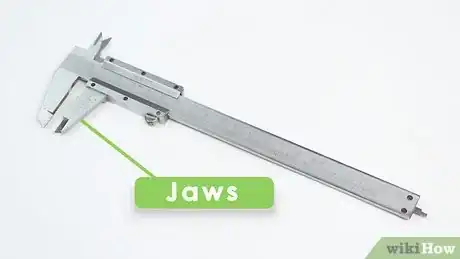
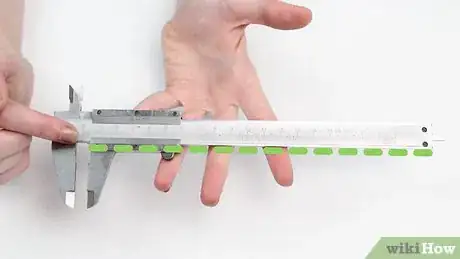

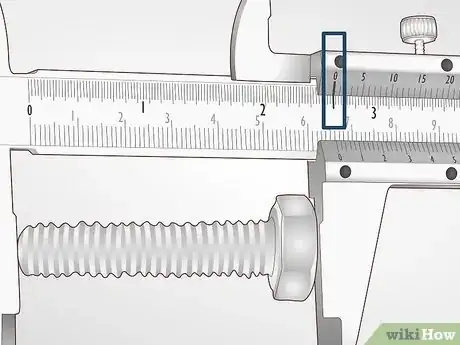


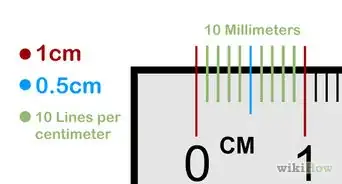


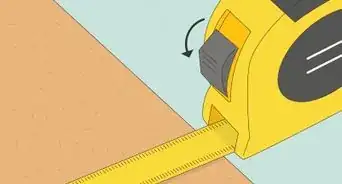

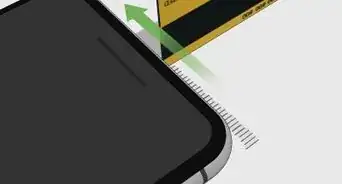


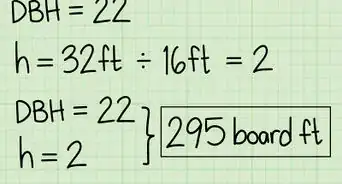

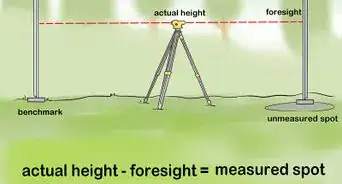
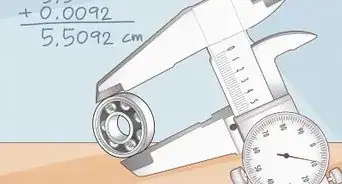
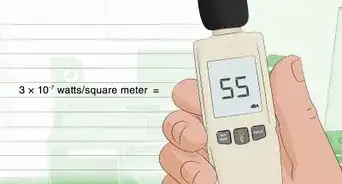
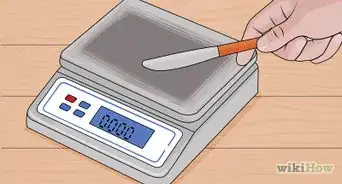










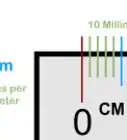


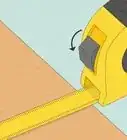



































wikiHow’s Content Management Team carefully monitors the work from our editorial staff to ensure that each article meets our high quality standards. This article has been viewed 1,899,718 times.